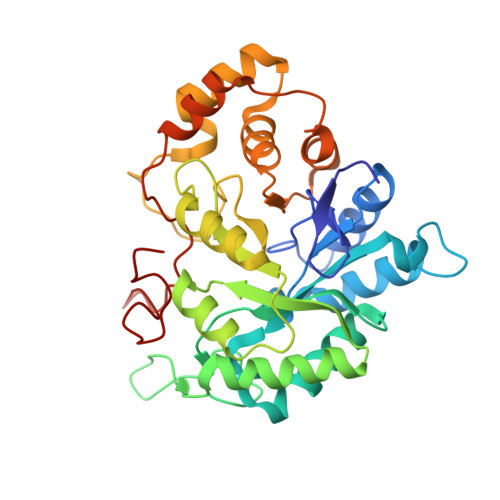Structure of aldehyde reductase in ternary complex with coenzyme and the potent 20alpha-hydroxysteroid dehydrogenase inhibitor 3,5-dichlorosalicylic acid: Implications for inhibitor binding and selectivity
Carbone, V., Chung, R., Endo, S., Hara, A., El-Kabbani, O.(2008) Arch Biochem Biophys 479: 82-87
- PubMed: 18782556
- DOI: https://doi.org/10.1016/j.abb.2008.08.014
- Primary Citation of Related Structures:
3CV7 - PubMed Abstract:
The structure of aldehyde reductase (ALR1) in ternary complex with the coenzyme NADPH and 3,5-dichlorosalicylic acid (DCL), a potent inhibitor of human 20alpha-hydroxysteroid dehydrogenase (AKR1C1), was determined at a resolution of 2.41A. The inhibitor formed a network of hydrogen bonds with the active site residues Trp22, Tyr50, His113, Trp114 and Arg312. Molecular modelling calculations together with inhibitory activity measurements indicated that DCL was a less potent inhibitor of ALR1 (256-fold) when compared to AKR1C1. In AKR1C1, the inhibitor formed a 10-fold stronger binding interaction with the catalytic residue (Tyr55), non-conserved hydrogen bonding interaction with His222, and additional van der Waals contacts with the non-conserved C-terminal residues Leu306, Leu308 and Phe311 that contribute to the inhibitor's selectivity advantage for AKR1C1 over ALR1.
Organizational Affiliation:
Medicinal Chemistry and Drug Action, Monash Institute of Pharmaceutical Sciences, Parkville, Victoria, Australia.

















